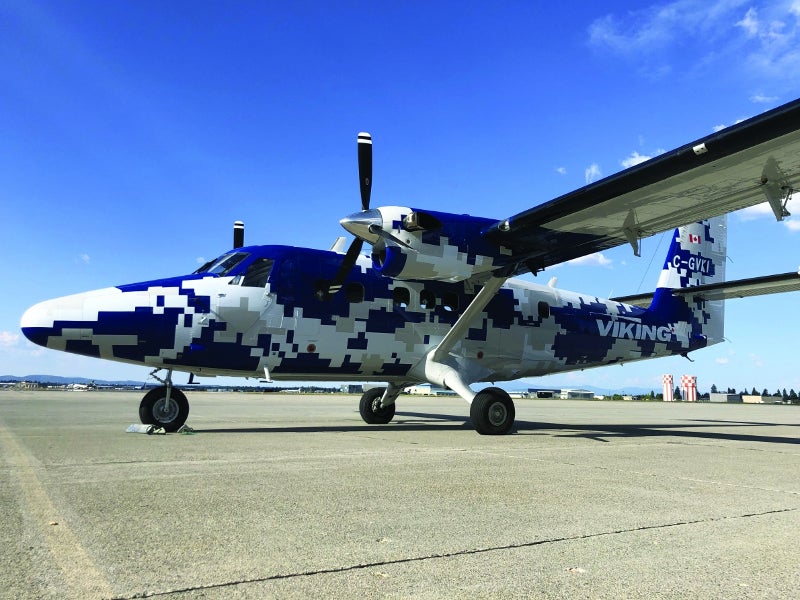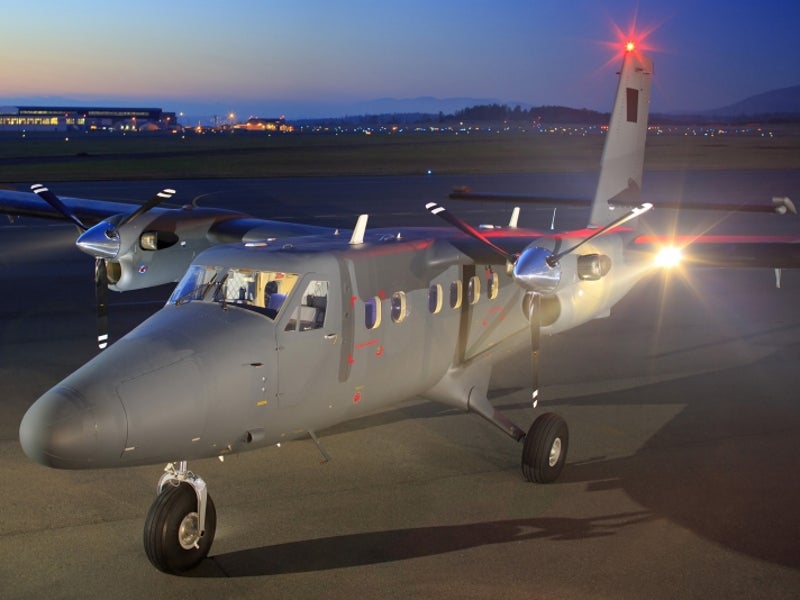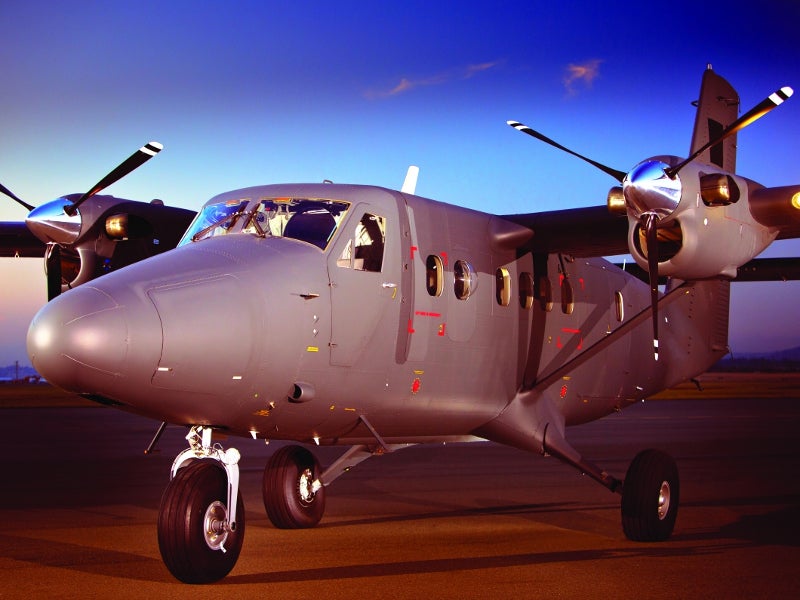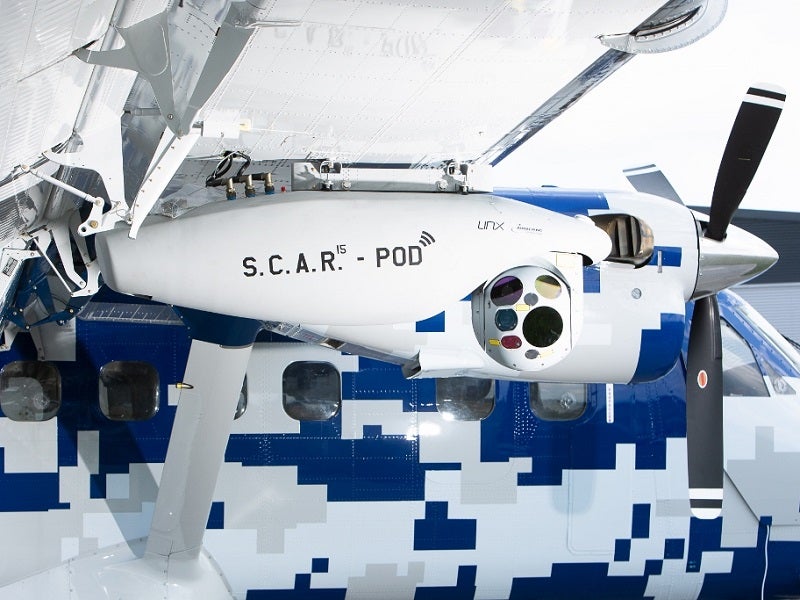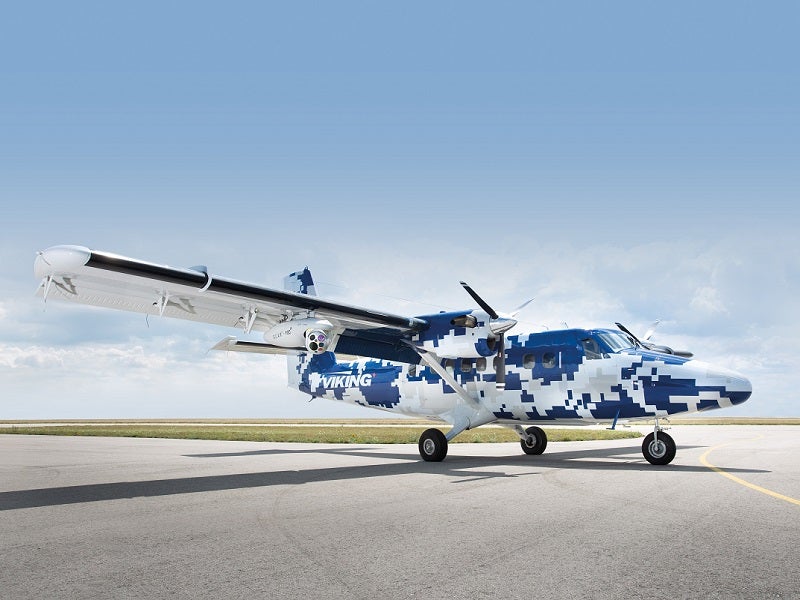Guardian 400 is a special mission variant of the Series 400 Twin Otter aircraft designed and developed by Viking Air, an aircraft manufacturer based in Canada.
Low-speed manoeuvrability, greater endurance, short take-off and landing roll, and open architecture make the Guardian 400 suitable for multiple missions, such as medium-range patrol, search-and-rescue (SAR), transportation, drug enforcement, critical infrastructure support, and medical evacuation (MEDEVAC).
The Guardian 400 was on display during the Paris Air Show 2019. The world demonstration tour of the aircraft involving demonstration flights in various countries worldwide began in September 2019.
The demonstrator aircraft was also displayed at Dubai Air Show 2019 and will also be showcased at CANSEC Defence and Security Show 2020.
A total of 30 Guardian 400 aircraft are in service, with customers based in the US, UAE, Peru, Panama, and Vietnam.
Guardian 400 design and features
Guardian 400 is built on the robust design of Twin Otter. It is an ideal platform for short-field operations, higher take-off weight, and long-range endurance missions. It is an all-metal non-pressurised aircraft with a high wing configuration. The aircraft is certified under the restricted category.
The open architecture of the aircraft allows for easy customisation for multiple missions, increasing the flexibility for customers. The multi-mission aircraft is designed to operate with five types of landing gear, such as standard wheel landing gear, straight floats or amphibious, intermediate flotation gear, and wheel skis.
The aircraft has a length of 16m, a wingspan of 19.81m, and maximum take-off weight of 6,350kg.
Avionics and payload
The standard version of Guardian 400 special mission aircraft features a Honeywell Primus Apex avionics suite integrating two primary flight displays (PFD) and up to two multi-function displays (MFD).
The flight deck is also equipped with a single Honeywell/Bendix King KHF-1050 radio with control head, a Wulfsberg RT-5000 v/UHF radio with control head, and a DO-160 D/178B/170 digital voice communication system.
Airborne Technologies is the designer of the special mission system architecture aboard the aircraft. A variety of payloads can be integrated based on the mission requirements.
The aircraft is available with baseline payload options, including Wescam Mx-15HDi or FLIR PolyTech UltraForce 350 electro-optical and infrared (EO/IR) sensors. The self-contained aerial reconnaissance (SCAR) pod from Airborne Technologies houses the EO/IR systems such as Hensoldt Argos II HD.
The aircraft is also compatible with other EO/IR systems, such as FLIR Systems Star SAFIRE 380, L3 Wescam MX-20, Raytheon AVES EO/IR, and Zeiss Leo II/ Leo III.
Guardian can also integrate Leonardo Osprey 30 radar, electronics intelligence (ELINT) system, GIS mapping, CNS Systems automatic identification system (AIS), Cobham 935 direction finder, searchlight, Optech T-7200 or Optech T-4800 fixed camera systems, identification friend or foe transponder, Link YE MK II data link system, and Saab civil aircraft missile protection system (CAMPS).
Cabin and interiors of Guardian 400
Guardian 400 offers three flexible interior configurations integrating a single or dual workstation, single and double seats, a stretcher, front and rear baggage compartments, a lavatory, and a camera hatch.
It can also be configured to standard passenger configuration, offering seating for 19 passengers. A MEDEVAC configuration of the aircraft can offer up to eight stretchers, along with an optional patient loading utility system.
The tactical workstation supplied by Airborne Technologies is a light-weight carbon fibre modular unit with Galleon mission computer, touch-screen monitors, data/voice and video recorders, mission management unit (MMU), hand controller for main control unit and single lenses reflex (SLR) camera targeting, and a CarteNav AIMS mission system.
Guardian 400 engine and performance
The special mission aircraft is powered by two Pratt and Whitney PT6A single-stage free-turbine engines driving two Hartzell HCB3TN three-bladed propellers. The standard fuel capacity of the aircraft is 1,757l, while the extended fuel capacity is 2,026l.
The maximum endurance of Guardian 400 with standard fuel capacity is more than eight hours, while the endurance with extended fuel capacity is more than 12 hours.
The special mission aircraft is capable of cruising at a speed of 182kt at 10,000ft. It has a rate of climb of 1600ft/min, while its ceiling altitude is 25,000ft.
Guardian 400 offers a ferry range of 2,037km at 10,000ft cruise altitude while carrying a payload of 6,350kg. Its optimum ferry range is 2,407km.

